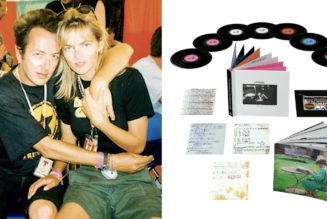
The topic of posthumous releases have been an ongoing debate amongst the music industry for some time. In the last year, releases from recently-deceased artists have seen an uptick and a list that includes Pop Smoke, Juice WRLD, Lil Peep and many more are at the center of the conversation.
It has extended beyond music, too: the subject of how to appropriately manage a late artist’s estate came to the forefront again this week, after a previously-unseen painting by Jean-Michel Basquiat appeared in a Tiffany and Co. campaign alongside JAY-Z and Beyoncé. Many art admirers took to social media in an uproar calling the use of the painting in an advertisement to be tasteless, with some claiming that the advertisement watered down the meaning of the art piece as well as Jean-Michel Basquiat as an artist.
Within music, though, it’s a thorny issue. While Pop Smoke and Juice WRLD’s posthumous releases were two of last year’s biggest releases. The main issue remains: how can an album be completed without the actual input of the artist? Prior to their death, Juice WRLD supposedly had thousands of unreleased tracks in his repertoire, while Pop Smoke was still working on rough cuts for what would have been his latest project at the time. While posthumous albums are treated as commercial assets, they may not have the artist’s own creative visions in mind. At the time of its release, Billboard spoke to 50 Cent, who executive-produced Pop Smoke’s Shoot For the Stars Aim For the Moon. He appeared to have treated the album as just the means to satisfy the material successes, saying that “as soon as I know that the record positioned itself for No. 1, I feel like I did enough.”
Of course, not all posthumous scenarios are entirely mercenary. In most cases, families of late musicians are given the estate rights to call the shots after their death. When Bankroll Fresh died, his mother decided to release the album years after his death. She said at the time that hearing his son’s voice made her still feel as if he was alive, “as long as his spiritual body operates in harmony he is still alive making his mark on the world and still carving out a legacy that makes me proud to call him my son.”
Mac Miller’s Circles is an ideal example for posthumous album releases. The label had supposedly never approached the family nor his manager, Christian Clancy, to discuss putting out the music. Jon Brion, who worked closely with Miller to produce the album prior to his death in 2018, was later given the go-ahead by the family to finish the album “in the most soulful way possible.” Brion completed the album the way Miller discussed with him. Even post-death, Miller had a supportive community, including Vic Wainstein – Miller’s engineer, who wanted his legacy to “look as good to the world as possible.”
Though it appears to have worked out for some artists, there are still those who are skeptical and would like their work to remain confidential out of respect for their artistic intent. Recently, Anderson .Paak showed off a new tattoo in his Instagram Story that revealed a message to his label and the public, “When I’m gone, please don’t release any posthumous albums or songs with my name attached. Those were just demos and never intended to be heard by the public.”
Despite posthumous albums becoming chart-topping successes, it is important to remember that the progress of the artist has already been frozen in time. It is likely that the posthumous releases may have fallen short of the artists’ original expectations and that realistically, the work unveiled to the public can never fulfill the actual artistic intentions of the departed musician.
The ethics behind posthumous releases, be it an album or a physical art piece, will remain a debate for years to come. What it comes down to is understanding that once an artist is no longer alive, the initial ambitions will have departed as well. While on one hand, some may see posthumous work as a way to keep a legacy going, others may see it as a constant reminder of the artists’ irreplaceable talent.









